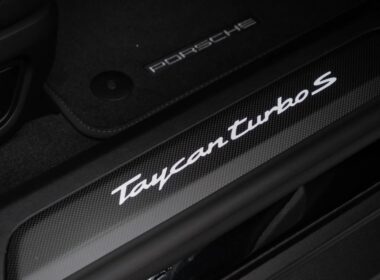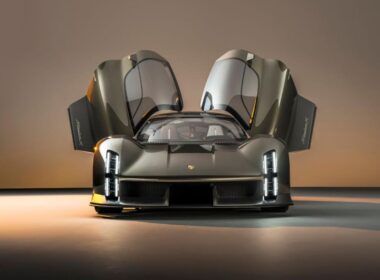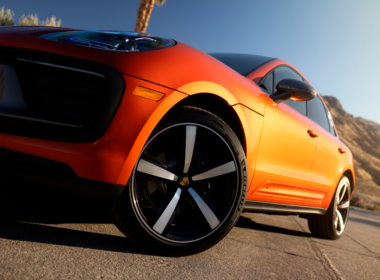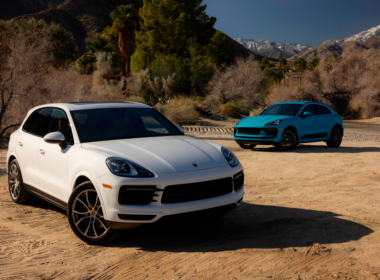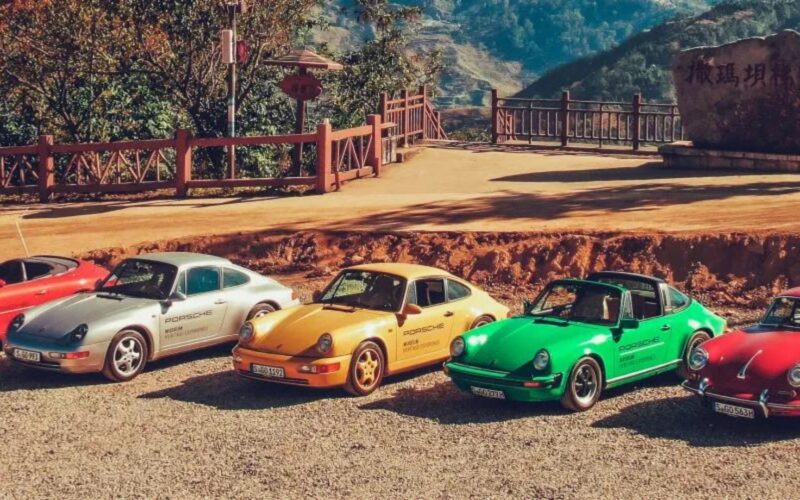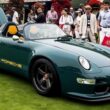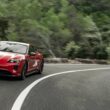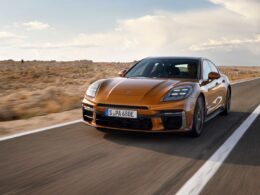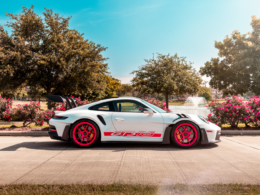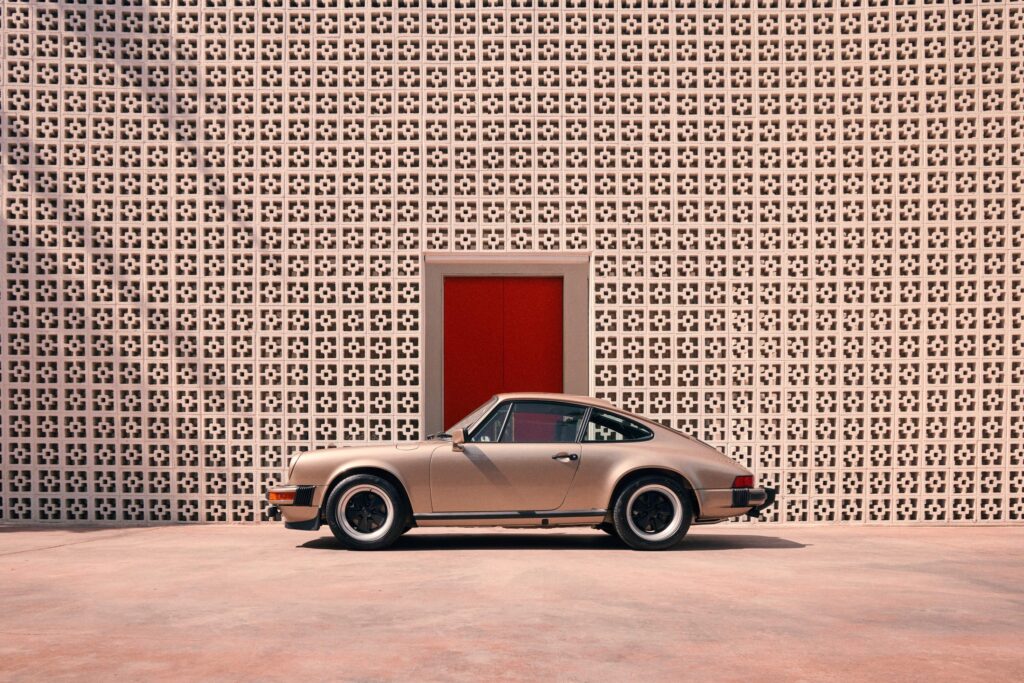Everything you love about Porsche today actually sprung from that father-and-son vision. Here’s the history of Porsche.

With a background in engineering experience that included working at Daimler-Benz, the elder Porsche established an independent design and engineering firm in 1931 and designed the Volkswagen Beetle. That’s right, this car (above) is actually a genuine Porsche – and an important part of German automotive history.
Ferdinand Porsche designed the car as a pre-series model and prototype in 1939.
The younger Porsche then went on to help grow the new company and was instrumental in designing the first Porsche sportscar – the 356. With just 40 horsepower from a rear-mounted – and slightly souped-up Beetle engine – the first Porsche boasted agile handling, as well as comfort and reliability.

By the mid-1950s Porsche had introduced its own engines as well as a more powerful version of the 356. Then came the legendary 911 in 1964.
Ahead of its time, the rear-engine 911 evolved over three decades by the time Porsche introduced a completely new 911 Carrera for 1999.
Porsche cars began competing almost from the start and quickly became synonymous with racing. Porsche cars have won an estimated 24,000 auto races worldwide, including more than 50 class wins at Le Mans.

So let’s take a look at some of the other important dates in Porsche history:
The early years (1948-1954)

1948. Porsche introduces the aerodynamic “356,” named for its design project number. The company hand-builds the first 52 cars in a small garage in Gmund, Austria, through the year 1949.
1950. Porsche leases space in the Reutter body factory in Zuffenhausen, a Stuttgart suburb. Reutter builds bodies for the 356 and production reaches 369 for the year.
1951. Ferdinand Porsche dies. The same year, horsepower for the 356 jumps to 60.

1953. The 550 Spyder road/race model proves to be a “giant killer” among larger, more powerful cars from Ferrari to Maserati.
1954. The Speedster model is introduced as a low-priced, “stripped-down” version of 356. The 1954-1957 Speedsters remain among the most sought-after Porsches by collectors even today.
1962. Porsche establishes an independent distribution network in Europe.
1964. The 911’s production begins and the new model is an instant hit, selling for $5,500 in the United States.

1966-1970. Porsche expands the 911 range quickly, adding an innovative Targa with removable roof panel in 1966.
1969. As production passes the 14,000 mark, Porsche enlarges the Zuffenhausen factory with a new multistory assembly operation.
1970. Porsche replaces the 912 with the 914, a lower-priced, mid-engine sportscar.
1972. Porsche opens its Research and Development Center in Weissach, Germany. Ferry Porsche becomes chairman of the supervisory board of Porsche AG.

1975. Porsche introduces 911 Turbo supercar in North America as a 1976 model. The 911 Turbo combines exotic car performance with luxury and everyday usability.
1976. Porsche replaces the 914 with the 924, a front-engine sports coupe. The car is powered by an Audi engine and built by Audi and features a rear transaxle for optimal weight distribution.
1978. Porsche introduces the 928. It is radically different from the 911 and features a front-mounted, liquid-cooled 240-horsepower V-8 engine. The 911 becomes the 911 SC, featuring a 3.0-liter engine and a host of enhancements.
1981. The 924 model is joined by 924 Turbo. The 924 is Porsche’s most popular model and also a successful racecar.

1982. Porsche Cars North America was established with its headquarters in Reno, Nevada.
1983. The first 911 Cabriolet is introduced. In the US, the Cabriolet outsells the Targa and quickly accounts for about one-third of 911 sales.
1984. Porsche AG goes public, with the Porsche and Piech families holding 875,000 shares of stock and 875,000 preferred shares listed for investors. The 911 is now known as the Carrera and features greater performance from a 3.2-liter engine.
1986. The Porsche 944 is the first car sold in US with both driver’s side and passenger airbags as standard equipment.
1996. The one-millionth Porsche was built in July of this year. The 911 Turbo features the all-wheel-drive system from the 911 Carrera 4, dual turbochargers and intercoolers, and 400 horsepower.
1997. The Boxster is introduced with mid-mounted 201-horsepower, 2.5-liter engine. Demand is very high.

1998. Ferry Porsche dies at age 88. Porsche introduces the first 100-percent all-new 911 model since the first one in 1964. The new car breaks with 911 tradition by using a liquid-cooled engine — though it’s still a horizontally opposed six.
2000. Porsche unveils the Carrera GT during the Paris Auto Show. The car has a mid-engine, open-cockpit
supercar concept featuring a 5.5-liter, normally aspirated V-10 powerplant with a speed in excess of 200 mph.
2001. The Porsche 911 GT2 debuts with a top track speed of 195 mph.
2002. Porsche announces plans to produce the Carrera GT with a six-liter V10 engine. An all-new 911 Targa and 911 Carrera 4S are introduced based on Porsche’s current 911 models.
2003. Porsche introduces Cayenne Sport Utility Vehicle as the Cayenne Turbo and Cayenne S.

2004. The Carrera GTSupercar and Porsche 911 GT3 arrive in U.S. Full line-up includes 911 Coupe, Cabriolet and Targa models, Boxster and Boxster S Roadsters, and Cayenne S and Cayenne Turbo sport utility vehicles.
2005. The all-new 911 Carrera and Carrera S debut with a familiar silhouette, but with more power and options
2006. At the Geneva Motor Show Porsche shows the first series-production car with spark-ignition engine to feature a turbocharger with variable blade geometry (VTG) – the 2007 Porsche 911 Turbo. In a historic race at the third American Le Mans Series (ALMS), the Porsche RS-Spyder racing cars entered by the American Penske team took the first and second overall spots, marking the first time-but not the last-that a sport prototype race car in the LMP2 class beat all competitors. That year Porsche dominated the LMP2 class with seven series wins.
2007. The new 2008 Porsche Cayenne is unveiled to the public for the first time at the North American International Auto Show, the introduction marks the world debut of the more powerful and stylish generation of Porsche’s sport utility vehicle.

2008. On February 4, the 200,000th Porsche Cayenne rolled off the assembly line in Leipzig, Germany. The model was a Cayenne GTS, which was unveiled that month at the Chicago Auto Show and launched that spring. In October, Porsche launches the new 911 Carrera and Carrera S and their Cabriolet siblings that offer new breakthrough technologies, including direct injection and the highly advanced PDK transmission. On November 19th, Porsche unveils the new, second-generation, and more powerful Cayman and Boxster models at the Los Angeles Auto Show.
2009. On January 5th, Porsche releases the first photos of its first four-door sports sedan, the Panamera. On January 31, the new Porsche Museum opens its doors to the public in Stuttgart-Zuffenhausen.
2010. In February, Porsche begins selling the new Boxster Spyder and in March, Porsche begins selling the new 911 Turbo and the GT3. In October, Porsche Cars North America begins selling the V6-powered 2011 Cayenne

2011. Porsche announces the Panamera S Hybrid and the Panamera GTS models.
2012. The new generation of the Boxster is announced.
2013. Porsche celebrates 50 years of the Porsche 911 with a special anniversary model. The Porsche Macan S and Macan Turbo have their world premiere at the Los Angeles Auto Show.
2014. The Porsche 911 Targa debuts at the North American International Auto Show. Porsche Cars North America has a record sales year with 47,007 units sold.
2015. The new 911 Targa 4 GTS and Cayenne Turbo S are revealed at the North American International Auto Show. Porsche opens the $100 million Porsche Experience Center and headquarters in Atlanta, Georgia. The concept car Porsche Taycan is debuted at the 2015 Frankfurt Motor Show as the Porsche Mission E.
2016. Porsche announces 718 Boxster and 718 Boxster S models. Porsche announces Panamera Sport Turismo models.

2018. Porsche announces the official name of the first purely electric Porsche: the Taycan.
2019. Porsche officially debuts its first fully electric vehicle, the Taycan, at the 2019 Frankfurt Motor Show.
2020. Some 20,000 Taycans are delivered in 2020, its debut sale year, representing 7.4% of the total Porsche volume


